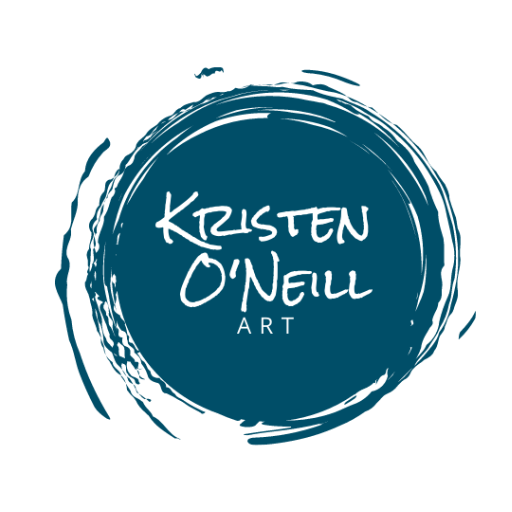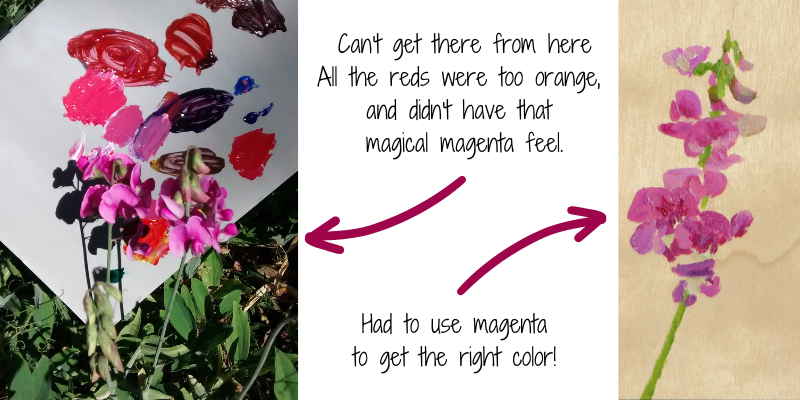Painting is a powerful way to bring ideas to life. The ability to edit (or exclude!) elements within a painting is crucial to creating a good painting. These techniques not only enhance the overall composition but also enable artists to refine their message and draw the viewer’s attention to specific elements. In this lesson, we will delve into the world of editing in painting, and exploring various techniques to help you to take your paintings to the next level.
Planning and Sketching
Before you start painting, you can choose to plan and sketch your composition. This initial step allows you to visualize the overall design and consider what elements you want to include and exclude. By establishing a strong foundation through sketching, you can avoid unnecessary clutter and focus on the core elements of your artwork. You can also limit false starts, save time, and make sure your composition has maximum impact before starting the painting. Many of my students have remarked how much they like creating “thumbnail” sketches of composition ideas before committing to painting itself.
Selective Observation
As an artist, it’s crucial to observe your subject matter selectively. Train your eye to identify key elements that contribute to the overall message or theme of your painting. By excluding unnecessary details, you simplify your composition and create a more impactful piece of art. We can see so much more than we realize. Our brains do a lot of editing without us even realizing it. If we put all these details in, we will be quickly overwhelmed, creating a busy, chaotic mess. This problem often crops up when we use photos as our source. The camera has the ability to capture everything it sees, but no ability to edit. If we paint directly from a photo, we are likely including things that are distracting.
Simplification and Abstraction
Simplification involves eliminating non-essential details and reducing complex forms to their basic shapes and forms. By stripping away unnecessary elements, you can emphasize your subject matter and create a more visually appealing composition. Abstraction, on the other hand, takes simplification a step further by distorting or exaggerating certain elements to convey emotions or ideas. Often times we use the word “abstraction” to mean “non-objective.” If we subject we start with starts from life, then it is on the realistic to abstraction spectrum. If we are creating without a reference to reality, then it is non-objective.
Value Studies
Understanding the principles of value is essential for effective editing and excluding in painting. Conducting value studies allows you to experiment with light and shadow, helping you determine which areas need more or less attention. By manipulating the values, you can direct the viewer’s gaze to specific focal points and create a sense of depth and atmosphere. High contrast areas draw attention. (See lesson below)
Color Harmony
Make sure your colors are harmonizing in your work. (Don’t invite a new color in at the 11th hour of painting! Even if it is a really, really neat color.) Colors need to intermix, so that they have little bits of each other to relate to each other. This may not be true if you are painting a color field painting in the 1940s and ’50s, but in general, it holds up. Plan out your color needs in advance. Make sure that you have the proper primaries to be able to generate the colors you will want to mix. For example, you are not going to be able to paint a magenta colored sweet pea without a magenta paint. (TRUST ME. I once had to make a separate trip to town, just for this!)
Bringing it All Together
Editing and excluding elements in a painting are essential skills for artists seeking to create impactful and visually engaging artwork. By planning, selectively observing, simplifying, and experimenting with color and value, painters can direct the viewer’s attention, convey emotions effectively, and refine their artistic vision. Remember that these techniques require practice and experimentation. With time, patience, and an open mind, you can master the art of editing and excluding, unlocking new levels of creativity in your paintings.
- What can you take out that won’t be missed?
- Do you need to add or shift anything for the composition?
- Do you need to increase contrast to draw attention, or decrease contrast to get an area to calm down?
- Are there places for your eye to rest?
- Is it interesting enough to keep us looking?



